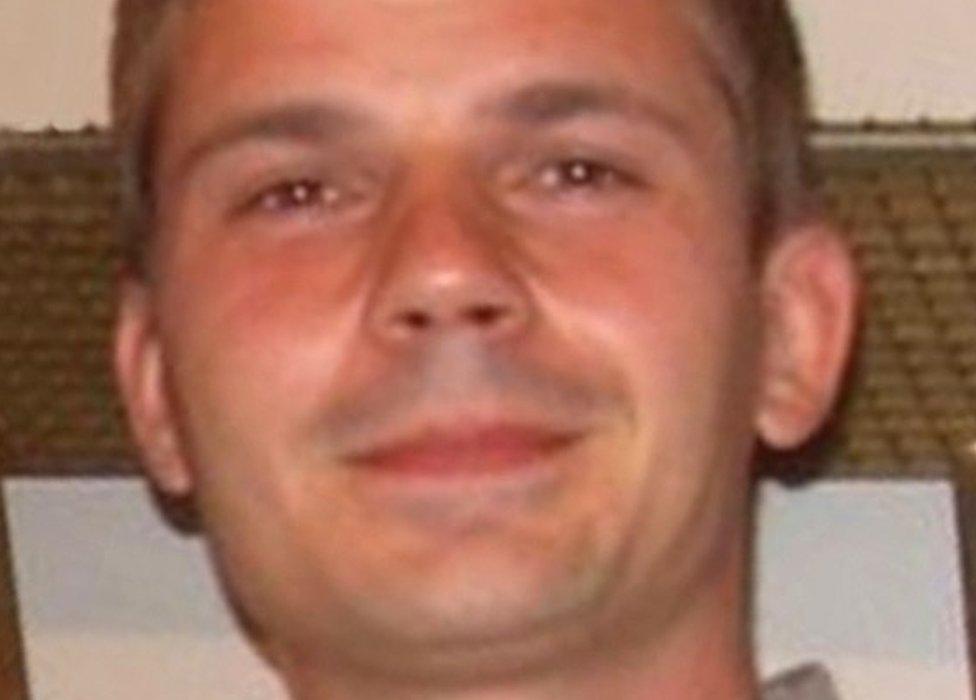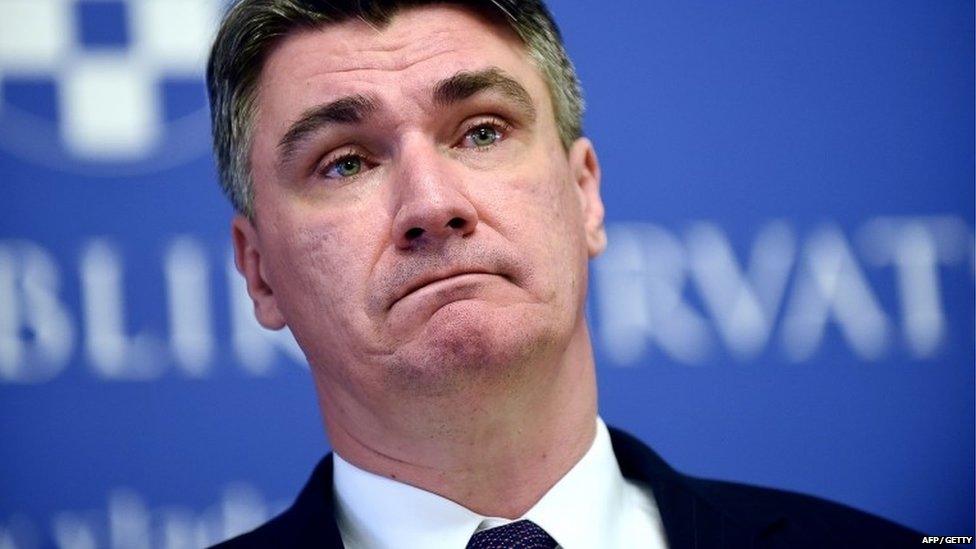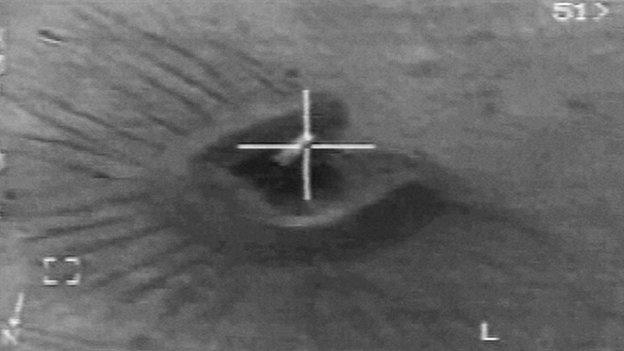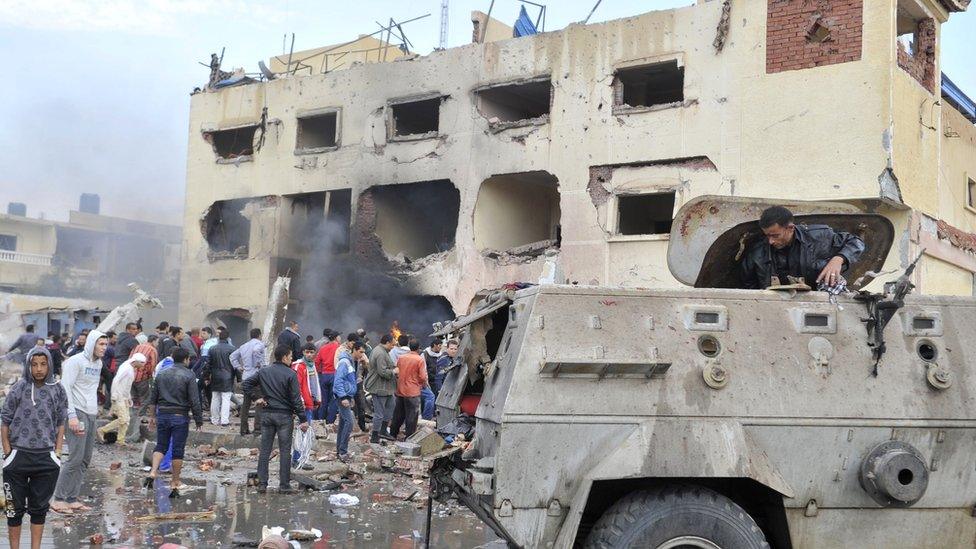How can the death of an IS hostage be verified?
- Published

Tomislav Salopek had been working in Egypt for the French geoscience company CGG
Croatia says it fears the worst for Tomislav Salopek after an Egyptian jihadist group affiliated to Islamic State (IS) claimed it had killed him. But how do authorities try to check such claims?
After a photo showing a beheaded man was published on Twitter, Croatia said it could not confirm whether Mr Salopek was dead - highlighting the difficulties for governments attempting to verify reports from territory where IS operates.
"It's nearly impossible," says Bill Roggio, senior fellow at the Foundation for Defence of Democracies policy institute.
"There's typically no way to get 100% confirmation. I can't think of any instance where they've [a hostage's government] recovered a body."
Without the physical verification of ID, such as DNA testing, experts go on visual evidence released by the group, he says.
"They basically take that as gospel, is my understanding of talking to officials."

In the case of Mr Salopek, a surveyor and father-of-two, the apparent death follows an all too familiar pattern.
A week ago, jihadist group Sinai Province posted a video of a man who identified himself as Mr Salopek kneeling in the desert next to a masked militant holding a knife.
The man said the Egyptian authorities had 48 hours to comply with the group's demands or he would face death.
On Wednesday, a picture was circulated showing a decapitated body beside a knife driven into the sand and the black banner used by IS.
It purported to be a picture of the "Croatian hostage".
'No reason to lie'
Mr Roggio says there "isn't any compelling reason" to believe that claims of the deaths of hostages have been faked.
"They are killing people to make a propaganda statement. A lot of credence is given to the videos," he adds.

What authorities look for:
1. Declaration from the group
2. Video authentication
Evidence of doctoring, consistency with other videos in terms of shot composition and characteristics, and technical features
3. Intelligence
4. Motivation
The question is asked 'Why would it be in the group's interests to lie?'

Professor Adam Dolnik, a specialist in hostage negotiation, agrees.
He says among the cast of people that can be involved with hostages, IS has no reason to lie.
"Various parties have a reason to lie if a hostage is being held.
"For example, intermediaries have a reason to lie. They could have sold on a hostage to someone else and are trying to get a payment despite not having them.
"But when it comes to IS they have little to gain by destroying their credibility this way."
He believes a combination of factors are considered before a government feels confident to confirm a death, including video evidence, information from intelligence agencies, the consideration of local rumours and announcements from IS itself.
"If there was any shadow of a doubt, a prime minister wouldn't declare it," he adds.
Video hallmarks
So if IS videos hold the key to confirmations, what do experts look for?
Paul Ginsberg, a forensic audio and video expert, said they would "analyse the electronic impulses, the audio, the video, the speech, voice identification, the geography - for whatever information it can provide - as well as the production techniques".
Ed Primeau, who specialises in video authentication in the US, said that "one of the first things to consider is consistency with other videos produced so far such as the file format and the frame rate.
"We have software that looks at frames to see if they make sense. If there's an unusual rhythm to how the frames are forming I would be comfortable to say it's been edited."
![The text of the tweet says 'ISIS beheaded the Croatian hostage in Sinai after the end of the period cuz [sic] his country's part in the war on ISIS'](https://ichef.bbci.co.uk/ace/standard/694/cpsprodpb/1450F/production/_84851238_84851237.jpg)
A tweet alleged Tomislav Salopek's death was in retaliation for the war on IS
He says specialists get used to picking up on characteristics.
"I've had a run of locomotive accident video tapes. I'm starting to see the hallmarks of what to expect."
In an IS video this would include the positions hostages are put into.
He adds any expert would be looking for major jumps in video or "hard edits".
Beyond this, governments will look for a more formal death notice from the group itself, says Matthew Henman, head of Jane's Terrorism and Insurgency Centre.
He says big groups like the Taliban and Islamic State, which are "media-savvy and well-structured" can put together such an announcement quite quickly.
- Published15 June 2015

- Published12 May 2016
